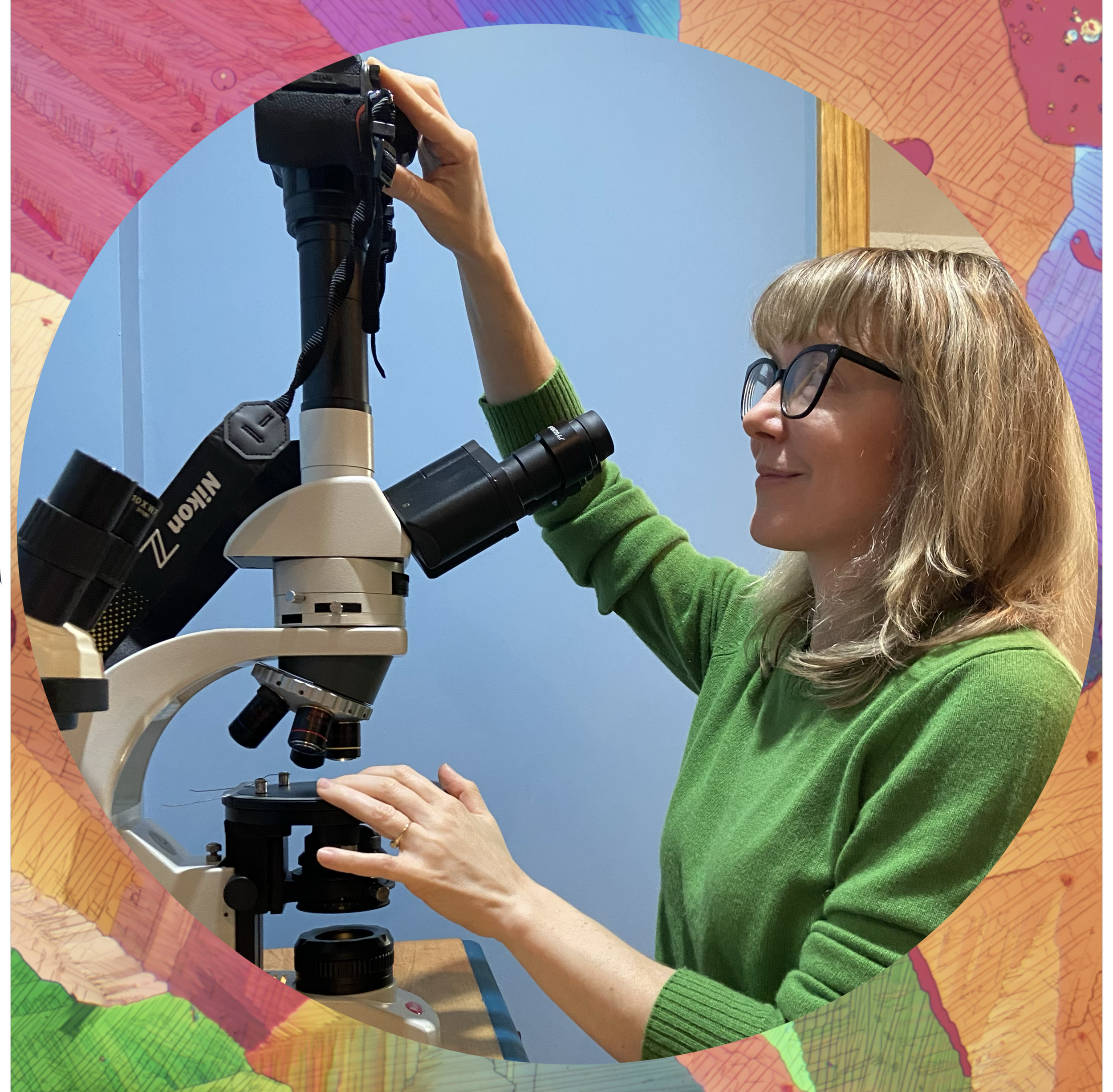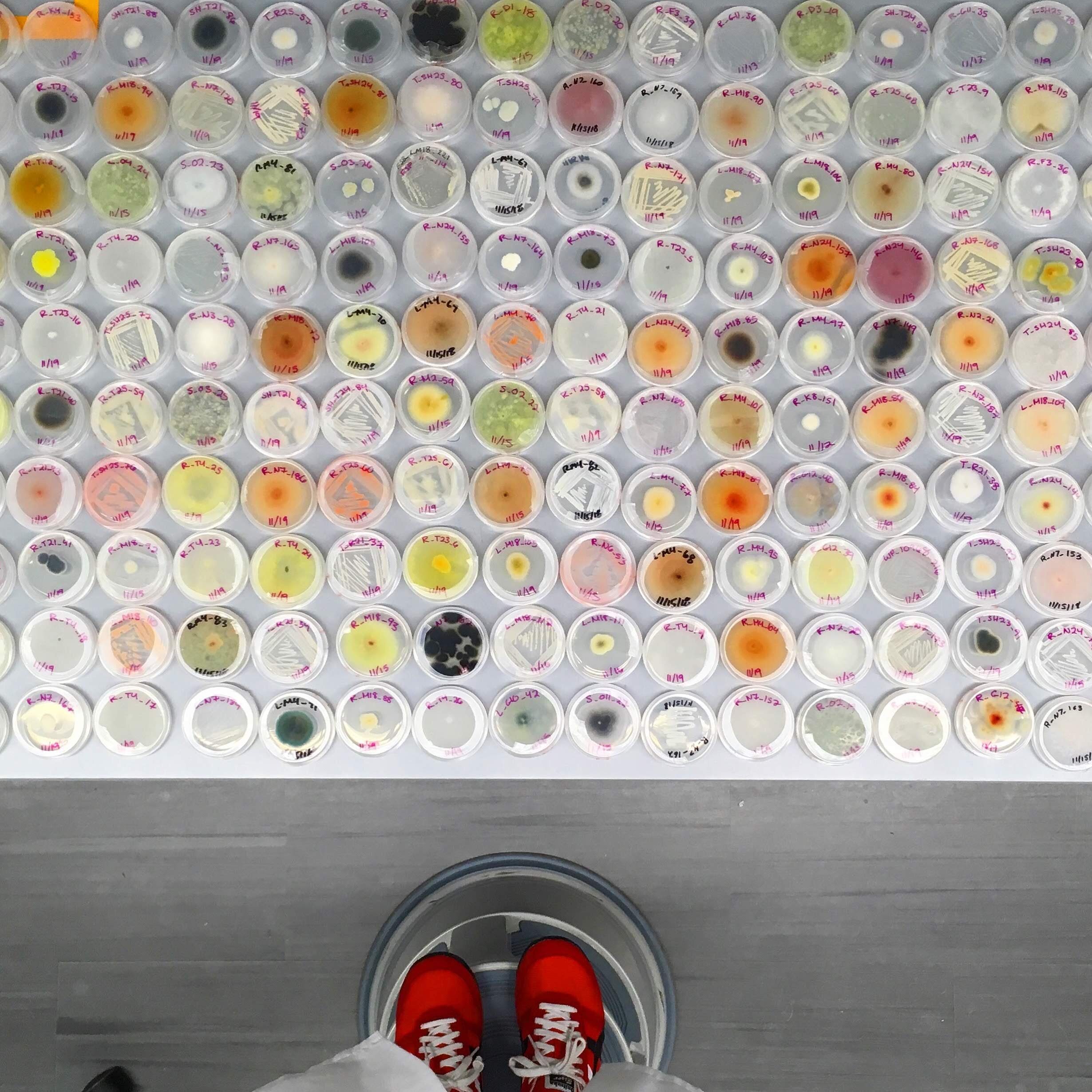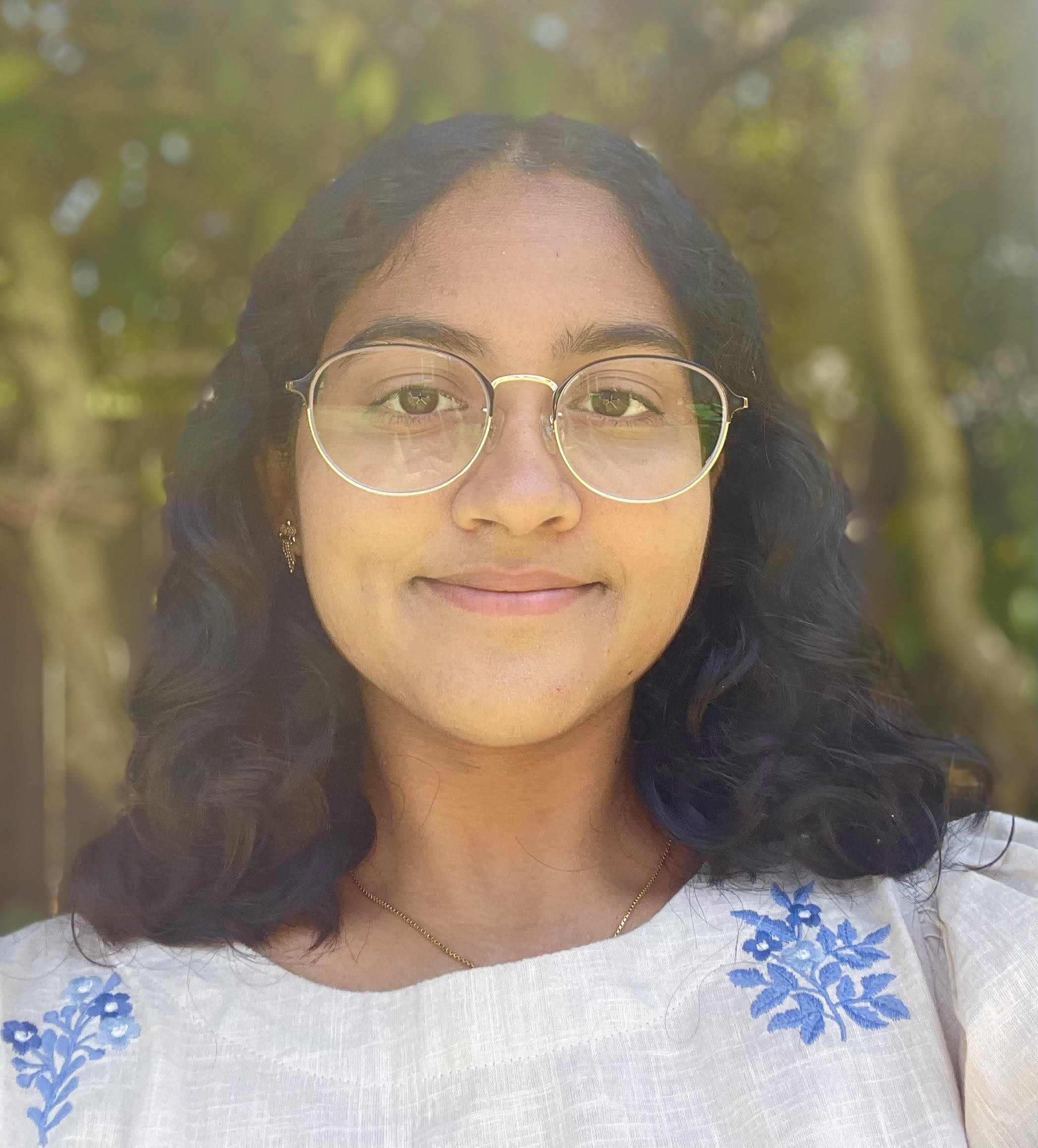
The Microbe Institute Fellows
Tracy Debenport is a research microbiologist who specializes in mycology (the study of fungi) and microbial art. Throughout her career, she has worked across academic and biotechnology labs. Her research has involved enhancing therapeutic proteins through glycoengineering, understanding the ecological role of Aspergillus flavus and aflatoxin production, and leveraging plant microbiomes to discover novel beneficial microbes for agricultural application.
In addition to being a published researcher, she is an award-winning photomicrographer. She has received multiple Nikon Small World Photomicrography awards and her images have appeared in magazines, blogs and in the recently published book, The Explanatorium of Science. She manages a popular Instagram account that highlights the beauty of microbes through original photography and art. She has participated in a number of social media collaborations with such illustrious organizations as Cornell Fungi, The Microbial Menagerie, and IFLScience. Her art has also been displayed in galleries (Nikon Small World touring exhibit), at various science-art events at leading universities, and at science communication conferences (e.g., Harvard University’s Microbial Sciences Initiative Annual Symposium, and the Science Talk conference).
To learn more about this fellow visit her website, or her instagram account.
Examples of Tracy’s artistic work and research subjects
“Plant Pathology design” (c) Tracy Debenport
Penicillium vulpinum (c) Tracy Debenport
“Microbial Sunrise” (c) Tracy Debenport
“Soil Microbes Plate” (c) Tracy Debenport
“Beta Alanine Crystals” (c) Tracy Debenport
“Aspergillus textile” (c) Tracy Debenport
“Aspergillus Colony” (c) Tracy Debenport
“My Work Bench” (c) Tracy Debenport
Fellow: Tracy Debenport
“Microbes & Molecules”
“Micro Love” (c) Tracy Debenport
The Project: Microbes & Molecules
The goal of this project, entitled “Microbes & Molecules,” is to create a digital art exhibit on the theme of microbe-derived molecules. This will include an adjacent educational activity to ‘gamify’ learning about these microbial applications.
The focus of the project is highlighting those microbes used in industry, medicine and food production-- from those that create the intoxicating alcohol in wine, to those which heroically produce life-saving antibiotics, even those villainous microbes that create the most carcinogenic compounds known to humans. Imbued with the playful whimsy of Tracy’s Keith Haring-esque graphic style, this exhibit will ask the audience to interrogate their relationship with microbes; highlighting how specific molecules mediate these interactions in impactful, if often invisible ways.
Project media: Graphic design, photography. Open-access component: An activity book leveraging these images and corresponding information to help achieve microbial application learning outcomes.
Project themes: Microbial education & Microbial art
Project Preview
Cephalasporins: A group of antibiotics that originate from the fungus Acremonium.
Penicillin G: The classic antibiotic derived from the fungus Penicillium.
Fellow: Kristina Skillin
“Sew Curious”
Kristina Skillin, M.Sc. is an artist, archeologist, and historian who traces the human narrative to connect historical practices to the development of technologies and products throughout history. As a professionally trained artist and scientist, she engages diverse audiences through the creation of art and adornment, microscopy-based research, and by creating projects that reveal the connection and interconnection of people through the common practice of ornamentation and design.
Her research interests include Arctic Archaeology, prehistoric human/animal relations, geoarchaeology (soil sciences), the development of metalsmithing technologies, the development of clothing and adornment, and historic and prehistoric ornamentation. She holds two B.A.s in Metals and Jewelry, and Classical Languages, as well as a M.Sc. from the University of Aberdeen in Archaeology where her dissertation Splitting Hairs: Testing the Feasibility of Light Microscopy Use on the Identification of Archaeological Cold-Preserved Fur and Hair included the development of a new process for speciating fur and hair remains.
Currently, she is the Co-founder and Director at the Museum of Beadwork where she is leading an international community project aimed at recording the passing of the Covid-19 pandemic and its effects on artistic communities and the individual’s experience.
To learn more about this fellow, visit her website & shop, her instagram account, or the Museum of Beadwork.
Examples of Kristina’s work and research subjects
A hair sample under a microscope
Stitching for the Sew Frazzled sewing workshop
Kristina investigating a site
The Project: Sew Curious
The goal of this project is to communicate the relevance of microbes through fashion, using photomicroscopy images of microbes to create utilitarian fashion accessories.
The microbes in focus are those we interact with frequently, or those that have a common occurrence in everyday life, yet those we are unaware of. The inaugural image is that of a yeast related to those used in bread baking and beer making. Two timely topics in this pandemic era. The material is printed at a US based company located in New England, then crafted by the artist and her company in Maine.
The microbe featured on these bags is a species of Saccharomyces yeast. These yeasts are a group of fungi, and include the yeast species we know as “baking yeast” and “brewing yeast.” These single-celled organisms are microscopic and replicate by cloning themselves. In bread, they feed on the sugars and flour and produce alcohols (that evaporate in the oven), some of the flavors, and carbon dioxide. This carbon dioxide produces the bubbles that leaven the bread, creating a rise. In beer, these yeasts are producing some of the carbon dioxide, all of the alcohol, and up to 50% of the flavor in each sip. Ever since we have been making bread or beer (many thousands of years ago) we have been relying on species of yeast to help us transform grains and water into the nutritive, intoxicating foods we enjoy. Other foods and beverages made possible by yeast include chocolate, wine, donuts, scotch, pretzels, and anything that lists “yeast lysate” or “nutritive yeast” or “yeast flakes” in their ingredients.
These Scanning Electron Micrograph images were originally created, arranged, and false-colored by collaborators at Mississippi State University.
Project media: Cloth, fashion accessories, photomicroscopy. Open-access component: TBD
Project themes: Microbial art & Science communication
To visit the full project, visit the Etsy Shop
Project Preview
Fellow: Sam Ruk
“Interbiota”
Sam Ruk (she/her) is a high school senior based in California, USA. Digital art is her first interest–she is always looking to explore ideas through creative illustration or colorful design. Biology is her second interest–she hopes to pursue academic research in one of the many disciplines she is curious about.
To learn more about this fellow, visit her project website.
The Project: Interbiota
Interbiota is an educational website with the intention of broadening the audience’s view of the microbial world. Microbiology is full of stories with fascinating microbial characters–microbes that light up the ocean, conduct trade deals with plants, make homes in our belly button, and much more. Through colorful design, playful illustrations, and accessible language, Interbiota aims to showcase these microbial stories in an engaging way.
In the words of the creator, Sam, “I created Interbiota to learn about microbiology, having known little about the field myself. Through the process of reading, synthesizing, and communicating research, I learned so much more than I would have ever expected. Interbiota reflects my perspective as a newcomer to microbiology: I tried to use language with enough clarity and accessibility that even I, a high school student, could understand the content. My hope is for anyone to be able to learn as much from my website as I learned by creating it.”
Project media: Digital. Open-access component: Publically-accessible website
Project themes: Microbial art, education & science communication
To visit the full project, visit the Interbiota.
Project Preview
Support the Projects of Fellows and Collaborators
These science art (or SciArt) projects are co-created between members of the Microbe Institute and interdisciplinary artists, scientists, and educators. Learn more about the fellows (and their projects) below, as well as the projects of some of our collaborators.
Sew Curious: Locally made canvas accessory bags printed with microscopic images of yeast cells. Featuring the work of Fellow Kristina Skillin.
Microbes & Molecules (NOT CURRENTLY ACTIVE): Fashion, bags, and diverse accessories featuring graphic artwork of microbes and the helpful molecules they create. Featuring the work of Fellow Tracy Debenport.
Microbially Speaking: 3D printed microbe earrings featuring helpful viruses that secretly make our world better. Featuring the work of Collaborator Lea Shell.
Interbiota: An educational website with the intention of broadening the audience’s view of the microbial world, created by Sam Ruk.
The Microbiology Dress: A SheNova dress featuring false-colored photomicrographs of Saccharomyces yeast cells. Featuring the work of Collaborator Holly Renee.

“Never neglect an extraordinary appearance or happening”
Alexander Fleming, discoverer of Penicillin

































